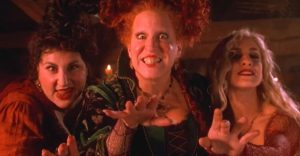10 Best Spider-Man Artists, Ranked

Spider-Man is one of the most enduring superheroes in comics, but part of the enduring success of the character is his ability to be interpreted in different ways. Peter Parker has been depicted in many different ways by some of the best artists in Marvel Comics history, all of whom left their indelible visual stamp on the character.
Classic takes on the character remain the model for his modern iterations, especially on the screen, but some of the best artists to work on Spider-Man brought a unique perspective to him. From Steve Ditko to Todd McFarlane, each artist contributed to the visual progression of the Wall-Crawler.
10 Alex Ross

Alex Ross is famous for bringing a painted, realistic style to superheroes, and his Spider-Man is at once quintessentially retro but also timeless. His first take on Spider-Man in the Marvels limited series in the ’90s provided fans a very Steve Ditko interpretation of Peter Parker, but one that was resolutely realistic in his depiction. For example, Ross includes such small details as wrinkles in Spider-Man’s costume, which gives his interpretation a realism that was previously not found in most artistic renderings of the hero. Alex Ross has contributed many images of Spider-Man over the years in covers and posters, continuing to cement his colorful take on the Wall-Crawler as one of the most iconic in Marvel Comics.
9 Humberto Ramos

Humberto Ramos brought a decidedly unrealistic but highly individual style to Spider-Man. His run on the character includes some of the best Spider-Man issues of the 2000s, where his cartoony and slightly exaggerated style helped define the character for a new decade. He also brought his unique style to the Superior Spider-Man run in the 2010s, where his idiosyncratic proportions helped convey the unusual nature of the mind of Doctor Octopus inhabiting the body of Peter Parker for a time.
8 Mike Zeck

Mike Zeck brought a clean and powerful artistic style to a number of great Spider-Man stories in the ’80s. His most significant contribution came during one of the best Spider-Man story arcs of all time, “Kraven’s Last Hunt.” Many of his images from this story, including Spider-Man emerging from his own grave on the cover of Web Of Spider-Man #32, have since become iconic. Zeck’s work straddles the line between the simpler linework of Silver Age artists and the busier and more kinetic work of artists who would follow him, like Todd McFarlane.
7 Sara Pichelli

Sara Pichelli is a major artist in the history of Spider-Man for co-creating Miles Morales, the Spider-Man from the Ultimate Comics universe of Earth-1610. Pichelli’s clean and naturalistic art style helped convey the sense of Miles as a true teenager in an often overwhelming world, which rapidly expanded to the entire multiverse. Miles and Pichelli’s iconic costume have since become a major part of the animated Spider-Verse in television and movies and quite possibly the live-action one, perhaps in the very near future.
6 John Romita Sr.

John Romita Sr. would become one of the most influential artists in the history of Spider-Man with his bold and graphic style. He followed Steve Ditko after his departure from the book in the ’60s but defined his own style for the Wall-Crawler by making Spider-Man a little more muscular and adult in appearance.
He contributed some of the greatest Spider-Man images of all time, including his walking away from the Spider-Man suit in a trash can in issue #50 of the series. This iconic image was echoed in the Sam Raimi Spider-Man movies and has since been homaged and parodied by countless other artists.
5 Art Adams

Art Adams has been creating iconic art for Marvel Comics for decades, including being one of the best X-Men artists at Marvel Comics. Adams’ highly detailed and energetic style provided a modern take on the character in a number of single issues, which Adams mostly worked on in lieu of longer runs on titles.
His story in Web Of Spider-Man Annual #2 stands out for a highly dynamic battle between Spider-Man and the New Mutant Warlock. He also drew Spider-Man as one of the new members of the Fantastic Four in a memorable two-issue stint on that book in 1990. While his output has been minimal, Adams’ take on the venerable hero was hugely influential and helped define Spider-Man’s look in the ’90s.
4 Erik Larsen

Erik Larsen continued to build on the detailed takes on the character by Art Adams and Todd McFarlane with his highly visual run on Spider-Man. The best example of his kinetic style is the evolution of Venom. Under Larsen’s watch, one of the best Spider-Man villains ever became more and more gruesome. Larsen added details like the long tongue and grotesque teeth, which have since become visual staples of the character in the comics and the movies.
In addition, Larsen changed the visual look of Peter Parker and Mary Jane, making them both almost as appealing and visually interesting as the heroes and villains Spider-Man regularly encounters. Larsen’s run on Spider-Man was brief before he left to create and produce The Savage Dragon but he was highly influential in modernizing the character for a new generation.
3 Todd McFarlane

Todd McFarlane’s hyper-detailed Spider-Man and cinematic approach to action scenes was instantly iconic. The creator of Spawn helped define the character for an entire era, and his signature art style was a major factor in Spider-Man #1 selling almost three million copies in 1990.
Before McFarlane, Spider-Man’s webs had never been so webby or textured. Ever since, they’ve looked more or less like his, though Spider-Man himself has continued to evolve through different artists. McFarlane was the first artist to emphasize the inherent oddness of the hero, whose limbs contort in impossible formations and sports oversized white circles for eyes. The artist embraced the hero’s otherworldy weirdness, which helped make Spider-Man even more popular than he was before.
2 Mark Bagley

Mark Bagley took Spider-Man back to his teenage and Steve Ditko roots with his lean and mean Spider-Man from the Ultimate Comics line. This slightly cartoony take on the character became in many ways the standard for years as the Ultimate version inspired an animated series and some elements of the live-action movies that followed. Bagley’s Spider-Man is perhaps the simplest Spider-Man, but that’s a huge reason why it works. He’s iconic and instantly recognizable to many fans as their version of Spider-Man.
1 Steve Ditko

Baked into the DNA of Mark Bagely’s Spider-Man and essentially every other artist’s is that of Steve Ditko. Ditko co-created Spider-Man with Stan Lee, and his classic art style defined Spider-Man for the ages. His Spider-Man was much more human in respect to other superheroes, being a fairly typical teenager without any major muscles or Olympian features. This would filter down into many other artists and interpretations in later media, making Ditko’s original vision of the character truly foundational in how people perceive Spider-Man.
About The Author

















